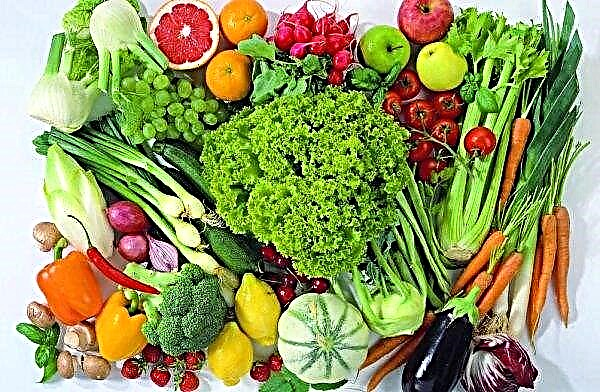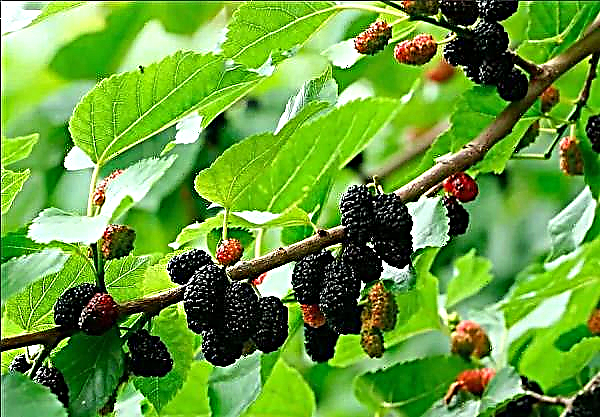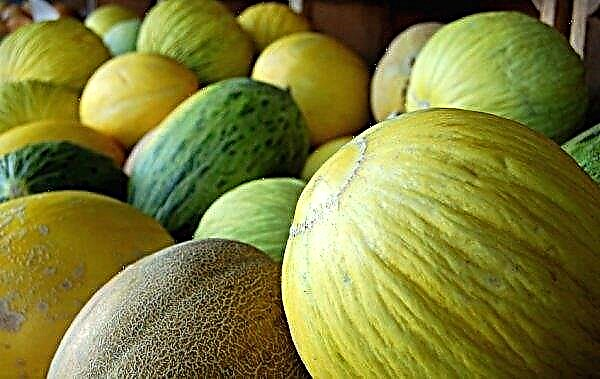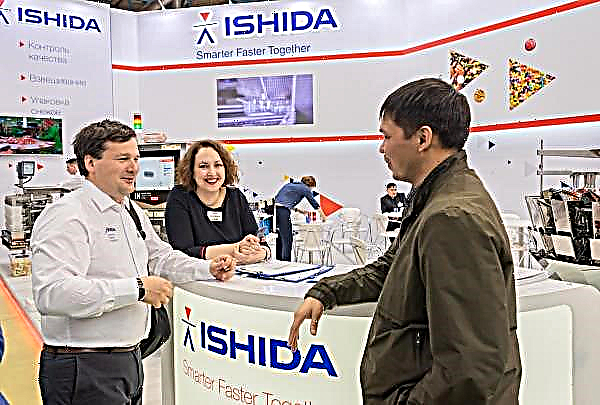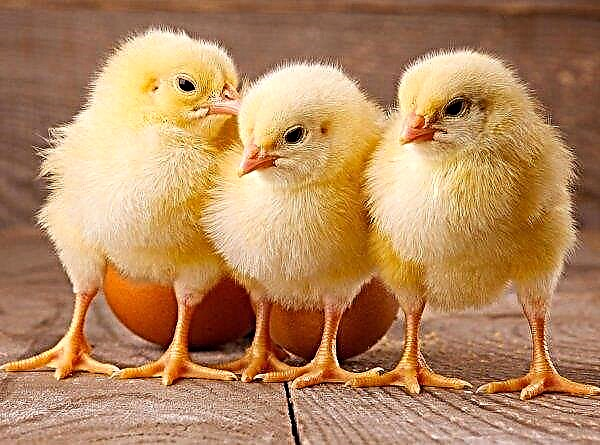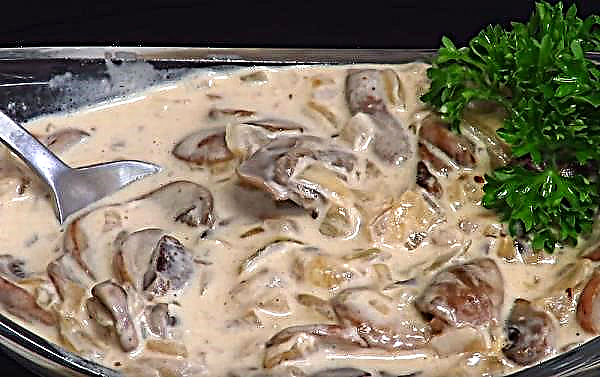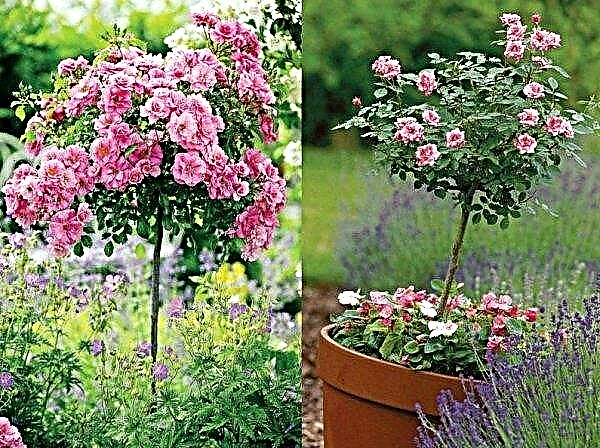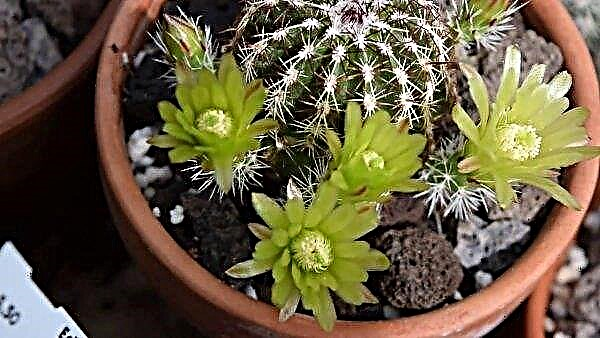There are many types of tomatoes, each of which has its positive and negative sides, and sometimes it is quite difficult to choose the right one. So, it is necessary to carefully study the type of seeds that are needed for planting. One of the popular non-green species is the Tatyana tomato.
Grade description
The main characteristics of this variety should include:
- the variety belongs to early ripening, as the fruits are formed on 96-102 days;
- outwardly it is determinant, and also grows in the form of a tree, that is, a standard;
- undersized - can reach 63 cm in height;
- abundant dark green foliage and a strong, fibrous stem;
- fruits from 160 grams, round shape, ripe color - red, soft variety, with a rich and pronounced taste;
- gives a large number of crops, about 5 kg per 1 square meter;
- can be grown under a film coating, but it is mainly grown on bare ground.
Did you know? From a botanical point of view, tomatoes are berries!
Thus, this variety is very convenient for cultivation in the early time.
Advantages and disadvantages
- The advantages of Tatyana include:
- high productivity;
- the fruits are convenient to transport, and at the same time they are not rigid, but have a thin film that does not allow them to crack on the road;
- tomatoes have a very rich taste, as for the early-ripe type;
- they quickly sing, and take up little space on the site;
- resistant to various diseases;
- have a decorative appearance.
- Disadvantages:
- small fruit size;
- Care must be taken.
As you can see, there are more pros than cons. That is why this variety is so popular.
Self-growing seedlings
Growing seedlings and determines how the crop will grow, what the fruits will be, their number. Therefore, you need to know how to correctly carry out each stage of growing a plant in order to get the maximum result.
Sowing dates
Sowing seeds should be carried out in early March from 1 to 10 - this is due to the fact that it is at this time of year that temperature and humidity are most suitable for the seeds to sprout well. Soil also plays a very important role, and in early spring it is saturated with enough water to feed the future plant.
The soil
For the soil, you need to mix several products:
- Priming. Suitable for both purchased and from the garden - it is only necessary that it has enough moisture to feed the seeds.
- River sand.
- Humus. It is necessary to accelerate growth and nourishment.
Since various pests or dangerous bacteria can often be found in the soil, it is recommended to disinfect it.
Important! Purchased soil is also recommended to be decontaminated, because even there may be harmful bacteria in it!
There are several types of soil treatment:
- Freezing. Twice, with a break of 3-4 days, the ground for planting must be taken out to frost with a force of -15 ° C for several days.
- Heat treatment. On a bucket or basin with boiling water for 1 hour, it is necessary to put a metal sheet with earth.
- Drug treatment. It can be fungicides, insecticides, or simple potassium permanganate.
 Soil preparation is a necessary initial stage, since the further growth of the plant depends on it.
Soil preparation is a necessary initial stage, since the further growth of the plant depends on it.Capacity for growing
It is recommended to germinate seeds in special boxes for the earth. They can be made of different materials, but the most common are wooden boxes, they are also more environmentally friendly.
Seed preparation
Like disinfecting the land, it is necessary to disinfect the seeds, as there may be pathogens of various diseases on their surface, and if several infected seeds are mixed with others, then all will become unusable.
For seed treatment, you can place them in a solution of potassium permanganate 1% for 20 minutes, then rinse with water and dry.
You can also use a growth stimulator, which will allow more efficient germination of seeds. There are many drugs available, so the instructions for each of them are individual.
Important! Processing seeds with growth stimulants is necessary strictly according to the instructions, since you can overexpose them, and then they will not yield fruit!
If you are confident in the high quality of the seeds, you can not so carefully resort to the previous preparation.
Sowing seeds
Seeds must be deepened to a distance of 1.2 to 2.2 cm. If the depth exceeds these indicators, they may not germinate.
Seedling Care
The temperature in the room should not be lower than 23 ° C, because then the plant will freeze and sprouts will not appear. It is also necessary to sprinkle the ground with peat on top, if other fertilizers have not been used, and cover the seeds with cling film.
When the first green shoots appear, you need to add a source of bright daylight - for example, put them on the window. If this is not possible, special lamps should be used. Watering is carried out as necessary, but at least several times a week, from a watering can or spray bottle.
Seedling hardening
Seedlings hardening is a process of gradual transition to lower temperatures and their change day and night. Therefore, starting from 3 days after the appearance of sprouts, it is necessary to gradually reduce the temperature by 2-3 degrees at different times of the day. For example, on day 6 in sunny weather the day should be up to 21 ° C, and up to 15 ° C at night.
Planting seedlings in a permanent place
At the end of May, it is necessary to transplant the sprouts into previously loosened and prepared soil (watering and fertilizers). Planting should be carried out at a distance from 33 cm to 43 cm, so the plants will not interfere with each other and become tangled. Since tomato Tatyana has very wide foliage, it is necessary to monitor a sufficient amount of free space.
Since tomato Tatyana has very wide foliage, it is necessary to monitor a sufficient amount of free space.
Features of cultivation in free soil
Since when germinating tomatoes, the sprouts are at first in comfortable and safe conditions, special attention should be paid to growing in the ground, because here weather conditions, insects and other factors influence plantings.
Watering
Watering should be carried out every 7-10 days, the amount of water depends on the measure of soil drying.
Did you know? More than 10,000 different varieties of tomatoes are officially registered.
If the weather is very hot and the earth dries more often than once a week, watering should be done every 3-4 days, because the tomato requires adequate nutrition. Water temperature depends on the air - the difference should be no more than 8 ° C. The optimal watering time is after lunch.
Top dressing
Organic fertilizers are best used - they can be either simple manure and peat, or alfalfa or seaweed. But there are a large number of chemical fertilizers that must be applied according to the instructions. Use fertilizers 3-4 times a season.
Stitching and tying the bush
For tomato "Tatyana" stepsoning does not need to be carried out, as well as tying the bush, since the dense stem withstands all the necessary load. Of these actions, it is recommended only to trim the lower leaves.
Soil care
Tomatoes with broad foliage need a large amount of space, which is why it is necessary to get rid of weeds on time as they appear and to loosen the soil before watering. It is also recommended to use soil mulching to prevent disease and preserve moisture. You can use peat or humus for this.
Preventative treatment
In general, these tomatoes are highly resistant to various diseases, but to prevent them, it is necessary to process seeds and land, mulch, and spray the plants 1-2 times per season with a solution of potassium permanganate with water.
Thus, we can conclude that the Tatyana tomatoes are stable, tasty, early ripe tomatoes, which have practically no shortcomings. However, for full development, they require careful care.



